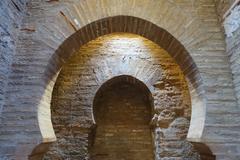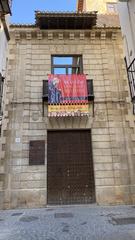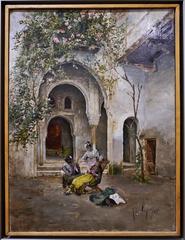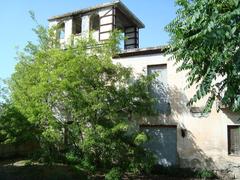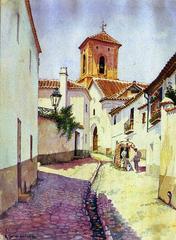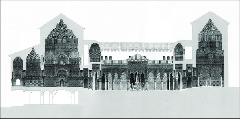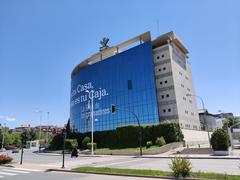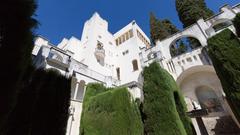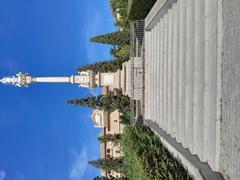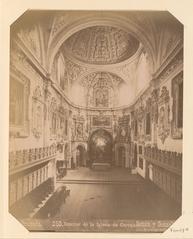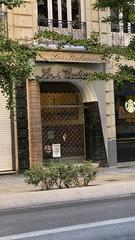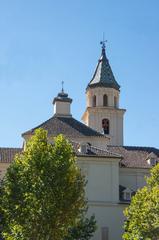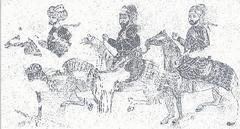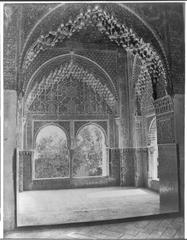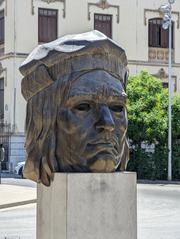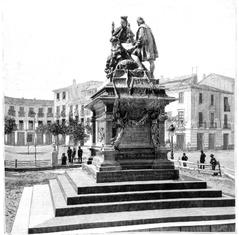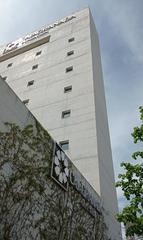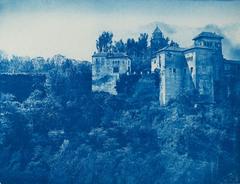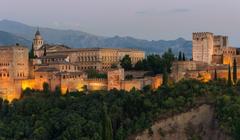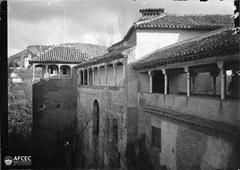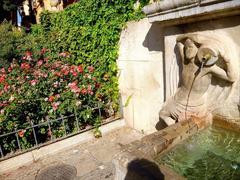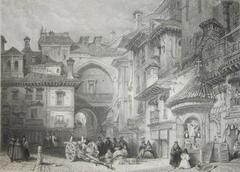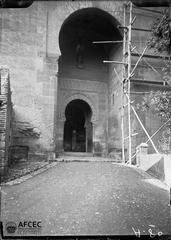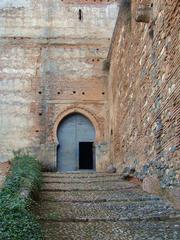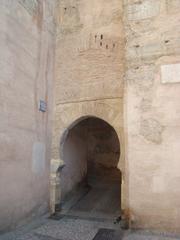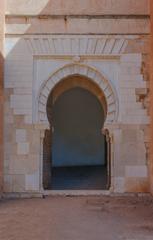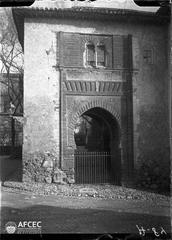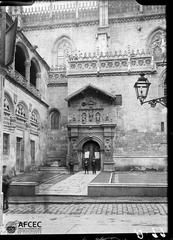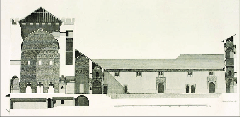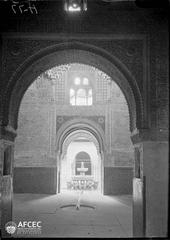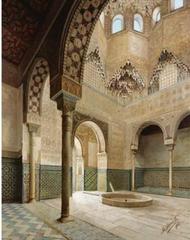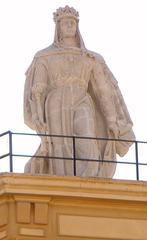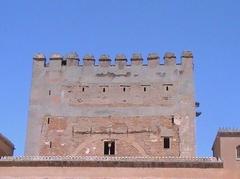Monumento al Duque de San Pedro de Galatino: Visiting Hours, Tickets, and Guide in Granada, Spain
Date: 14/06/2025
Introduction
The Monumento al Duque de San Pedro de Galatino, located in Granada, Spain, is a striking tribute to Julio Quesada-Cañaveral y Piédrola, the 8th Duke of San Pedro de Galatino. Celebrated for his vital role in shaping the city’s modern identity, the Duke’s influence spanned economic development, infrastructure, tourism, and civic progress. Set within the scenic Jardines del Salón and Plaza del Duque de San Pedro de Galatino, this monument merges art, architecture, and history, offering visitors an accessible and enriching experience. Open to the public around the clock with no admission fees, the site is ideal for travelers of all interests and abilities. This detailed guide presents everything you need to know for your visit, from practical information to historical context and nearby attractions (Rincones de Granada, Granada Tourism Site, GranadaWiki).
Table of Contents
- Introduction
- Location and Accessibility
- Visiting Hours and Ticket Information
- Historical Background and Significance
- Artistic and Architectural Features
- Integration with Urban Landscape and Nearby Attractions
- Special Events and Guided Tours
- Visitor Experience and Practical Tips
- Accessibility and Amenities
- Frequently Asked Questions (FAQ)
- Conclusion
- References
Location and Accessibility
The monument stands in the Jardines del Salón and Plaza del Duque de San Pedro de Galatino, at the end of Paseo de la Bomba, in central Granada. This urban oasis is adjacent to major landmarks like the Alhambra and Granada Cathedral, easily reached on foot, by public transportation, or taxi. Though parking may be limited due to the area’s historic layout, public transit provides convenient access. The gardens are fully wheelchair accessible, with paved paths and ramps, benches, and shaded spots for rest (Rincones de Granada).

Visiting Hours and Ticket Information
- Hours: Open 24 hours a day, 7 days a week. The gardens and monument are public spaces, accessible year-round.
- Tickets: Admission is free; no tickets are required.
It’s recommended to visit during daylight for optimal viewing, comfort, and photography.
Historical Background and Significance
Julio Quesada-Cañaveral y Piédrola (1857–1936), the 8th Duke of San Pedro de Galatino, was a pivotal figure in Granada’s transformation during the late 19th and early 20th centuries. He championed initiatives such as founding the Hotel Alhambra Palace, advancing the region’s tourism industry, and constructing the Sierra Nevada tramway and the first road to the mountains. His efforts in agriculture, mining, and politics fostered economic growth and modernized the city. The monument, designed by José Navas-Parejo Pérez, encapsulates his enduring legacy and contributions to Granada (ABC Andalucía).
Artistic and Architectural Features
Fountain and Water Elements
A central highlight is the rectangular fountain with two basins, each featuring ten upward-aimed water jets that cross at the center. This element pays homage to Granada’s Moorish heritage, echoing the famous Alberca del Generalife in the Alhambra. The black marble surrounding the fountain adds elegance and contrast, enhancing the tranquil atmosphere.
Monumental Columns and Pergola
Beyond the fountain, a series of cement columns in four parallel rows support interlacing iron arches, forming a living pergola. Climbing plants entwine the arches, providing natural shade and a sense of enclosure. This integration of greenery and architecture reflects Granada’s tradition of blending built and natural environments.
Sculptural Symbolism
The monument incorporates Sierra Nevada stone, Carrara marble, and bronze in its construction. Sculptural details include a bronze eagle, the Duke’s coat of arms, and a medallion with his likeness, symbolizing his visionary leadership and role as a connector between Granada and the world.
Integration with Urban Landscape and Nearby Attractions
The site is not an isolated sculpture but a multifunctional urban space, inviting relaxation, social interaction, and reflection. Its openness and accessibility mirror the Duke’s ethos of public service and connectivity. The monument is close to:
- Alhambra Palace: UNESCO World Heritage Site.
- Granada Cathedral: Renaissance architectural masterpiece.
- Casa de los Tiros: Museum with a bust of the Duke.
- Campo del Príncipe: Lively square with local cuisine.
- Casa-Museo de Ángel Ganivet: Nearby historic site.
Special Events and Guided Tours
While there are no official guided tours dedicated solely to the monument, it is often included in broader historical walking tours of Granada’s center and the Realejo district. The plaza also hosts occasional cultural events, particularly during Corpus Christi and other city celebrations. For current tour and event schedules, check the official tourism website or local tour operators.
Visitor Experience and Practical Tips
- Best Time to Visit: Early morning or late afternoon for optimal lighting and fewer crowds.
- Photography: The interplay of water, marble, and greenery offers excellent photo opportunities.
- Rest Areas: Benches and shaded spots make for a pleasant break during your city walk.
- Combine Visits: Pair your stop with nearby attractions for a comprehensive Granada experience.
- Etiquette: Respect the tranquil environment and local community, especially in early or late hours.
Accessibility and Amenities
- Wheelchair Access: Yes, with paved paths and ramps.
- Public Facilities: Cafes, shops, and restrooms are available nearby, especially around Campo del Príncipe.
- Safety: The area is generally safe, but be mindful of personal belongings, especially at night.
Frequently Asked Questions (FAQ)
Q: Is there an entrance fee for the monument?
A: No, both the monument and surrounding gardens are free and open to the public.
Q: When is the best time to visit?
A: Daytime, especially early morning or late afternoon.
Q: Are guided tours available?
A: Many local operators include the monument in broader historical tours.
Q: Is the site accessible for visitors with disabilities?
A: Yes, though some surrounding cobblestone streets may be challenging.
Q: What is the best way to reach the monument?
A: Walking from the city center, or using public transport or taxis. Parking is limited.
Conclusion
The Monumento al Duque de San Pedro de Galatino stands as both a commemoration of a visionary leader and a dynamic urban space that embodies Granada’s spirit of progress and inclusivity. Its central location, artistic features inspired by Moorish tradition, and accessibility make it a must-see for anyone exploring Granada. Whether you’re interested in history, architecture, or simply seeking a peaceful spot amidst the city’s vibrancy, the monument offers a memorable experience. Enhance your visit by exploring nearby landmarks, joining local tours, and using travel resources like the Audiala app. Stay updated through official tourism channels for the latest events and visitor tips, and immerse yourself in Granada’s rich heritage (Rincones de Granada, Granada Tourism Site).
References
- Visiting the Monumento al Duque de San Pedro de Galatino: Hours, Tickets, and Historical Insights, Rincones de Granada
- Monumento Al Duque De San Pedro De Galatino in Granada: Visiting Hours, Tickets, and Historical Insights, Rincones de Granada
- Monumento Al Duque De San Pedro De Galatino: Visiting Hours, Tickets, and Historical Significance in Granada, ABC Andalucía
- Official Granada Tourism Site, Turismo de Granada
- GranadaWiki - Duque de San Pedro de Galatino

